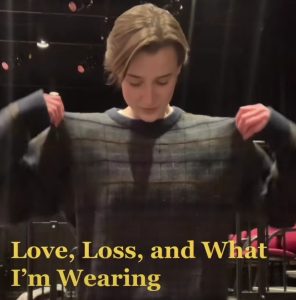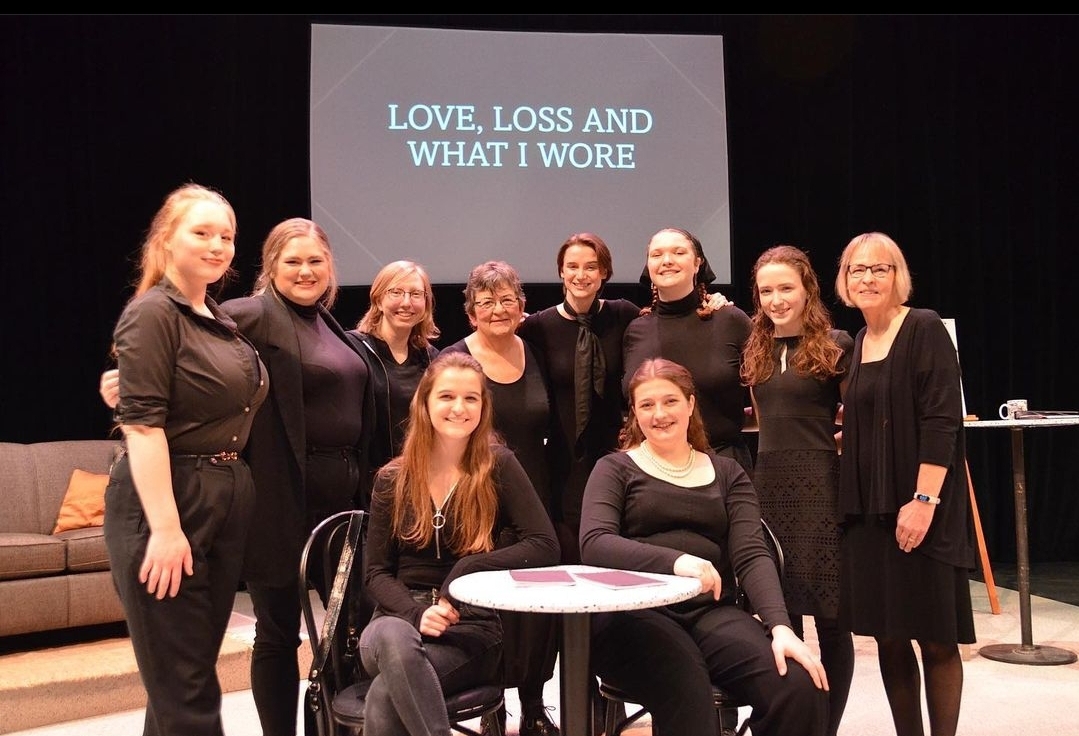Love, Loss, and What I Wore, directed by Christian Boy, was not the show that I was expecting to see. I expected to see one main story about a woman who had experienced love, loss and what she wore while it happened. Almost needless to say, I was wrong. It was a show that was tender, thoughtful, comedic, and had me holding back tears in the end.
The show itself featured a mix of long and short narratives and was filled with monologues and short anecdotes. There was a screen set up in The Comstock Theatre where the production took place. The screen acted as a transition through a variety of topics. Each one exploring something tied to the experience of being a woman and the clothes they were wearing during those moments in their lives.

The entire cast was comprised of women. Three of the actresses were Concordia College faculty and community members. They were Tara Gavelle, Mary Cochran, and Cindy Larson-Casselton.
What really stood out to me was the way that each of the characters were able to embody different specific experiences that a woman has. Starting with the influences of our mothers, to the first piece of clothing tha
t we can remember. They talked about what they wore for marriages and divorces–what pieces they kept and the ones too painful to hang onto. Then, that one day they will be clothes that will be put on by generations following as they play dress-up.
The point of Love, Loss, and What I Wore, in my opinion, was about how clothes can mark the passage of time in a way that no other everyday item is capable of. Each of the different narratives proved that women of all different ages, sizes, and clothing trends can relate to how the clothes we wear can make us feel.
The part that brought tears to my eyes was Cindy Larson-Casselton’s character. The character got breast cancer at a young age and there was a low chance of survival. But she survived. After chemo and a mastectomy to remove the cancer, she was able to get breast implants. What kept her going was the idea of wearing a gifted beautiful bra after all of it was over. Larson-Casselton approached the segment as hesitant and was able to be self-deprecating, but in the end showed that even silly things like the thought of wearing something so mundane can get us through the toughest moments in our lives.

A coffee shop served as the setting of the play. It had a rich brown sofa that stood on a platform. While most of the seating was on the outside, there were two chairs placed in the middle. It could be described as cozily simple, as a place that instantly welcomed its customers. That said, each character held a little black book that paid homage to the origin of the play as it was made out of Reader’s Theatre.
For their costumes, everyone was dressed in the color black. Most wore black pants and had their arms covered, but a few wore dresses with black tights and black shoes. The was a point to this. At one part during the show, the actresses questioned the first time they wore black. They wondered how they could wear any other color.
Now, I am left to wonder about my own clothes and how they mark the passage of time in my own life.

